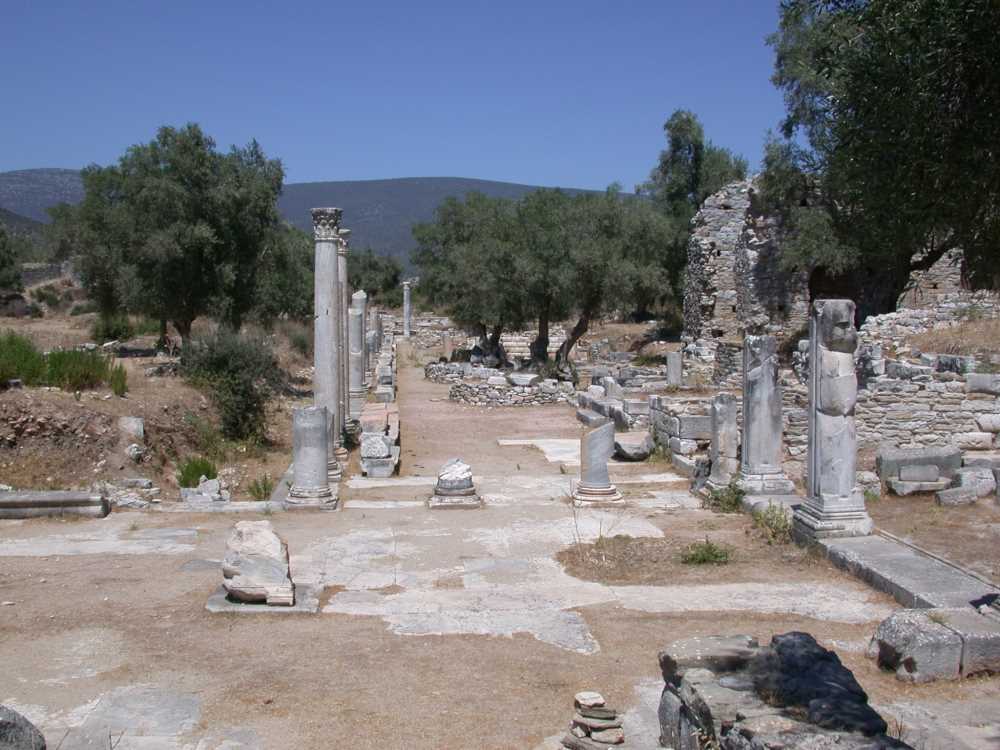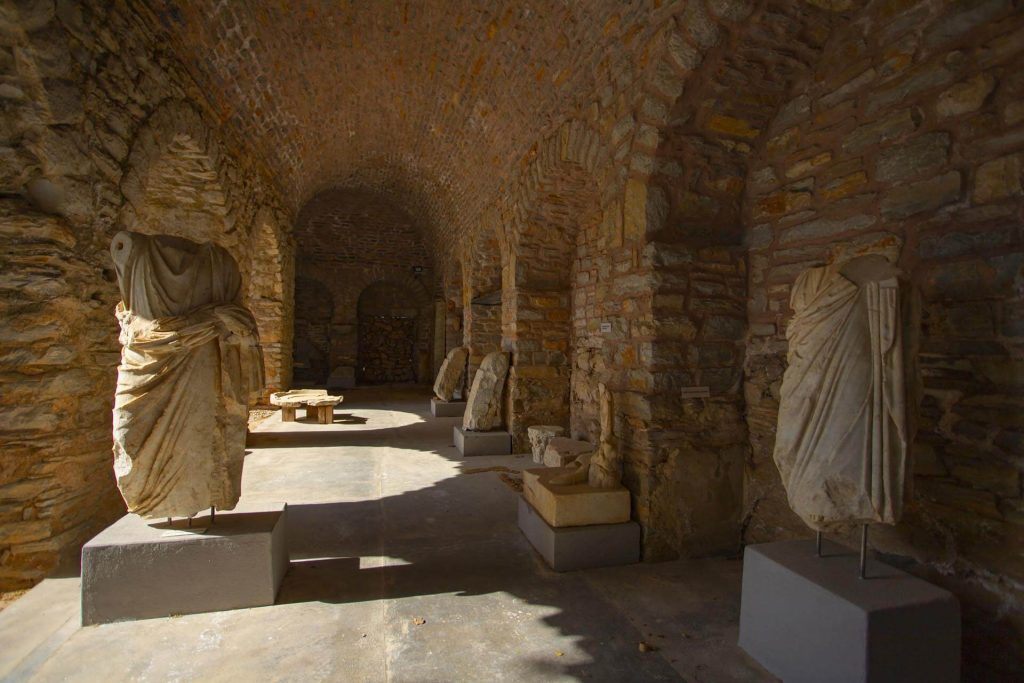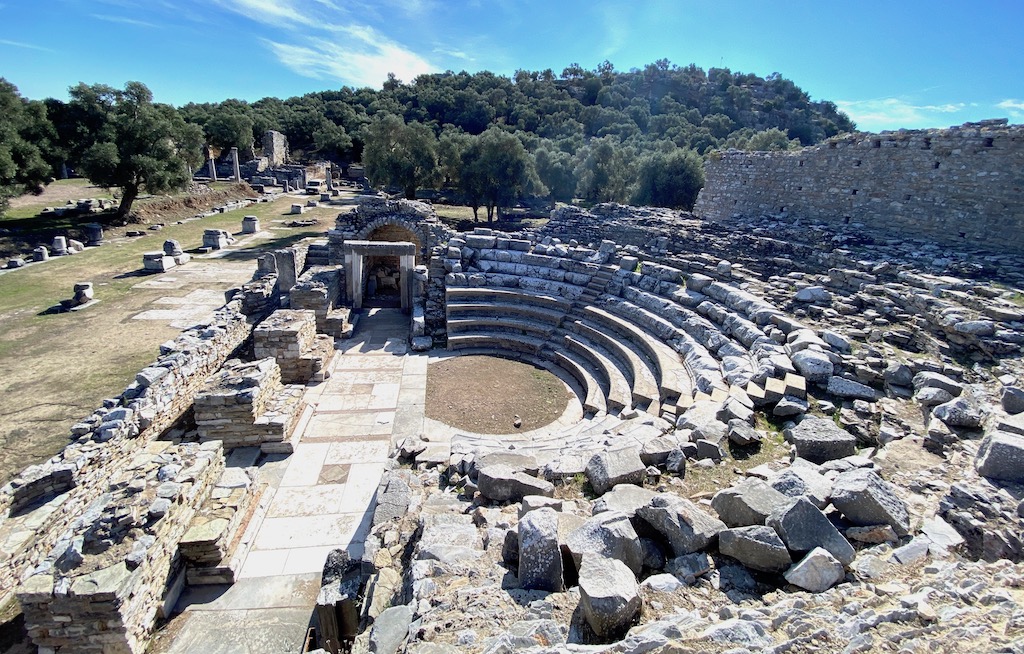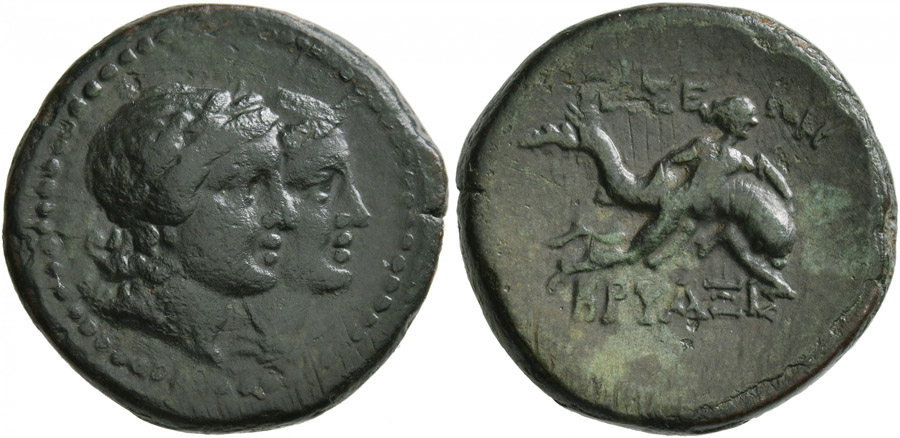
The city that witnessed the immortal friendship of an orphan and a dolphin: Iasos
The city of Iasos, whispered by the waves of the Aegean Sea, bearing the traces of history and mythology, is known not only for its ancient ruins and natural beauty, but also for the immortal friendship of an orphan boy and a dolphin.
This extraordinary story transforms Iasos into more than an ancient city, but a home of fairytale atmosphere and emotional bonding.
Iasos Ancient City is located within the borders of Kıyıkışlacık Neighborhood, Milas district, Muğla province. The earliest archaeological finds in the ancient city date back to the 3rd millennium BC. The earliest architectural remains are the wall remains of the Bronze Age settlement dating to the 2nd millennium BC.

Iasos is an important port city of the ancient Carian region. It was founded by the Argosians in the 9th century BC and grew with the settlement of immigrants from Miletus in the following years.
📣 Our WhatsApp channel is now LIVE! Stay up-to-date with the latest news and updates, just click here to follow us on WhatsApp and never miss a thing!!
The city experienced its heyday in the 4th and 3rd centuries BC. It continued its existence as an important port city during the Roman Period. During the Byzantine Period, it became a bishopric center.
The most important buildings of the city of Iasos include architectural structures such as the Temple of Athena, Bouleuterion (Assembly Building), Theater and Odeon. athena Temple was built in the 5th century BC. The theater of the city has a capacity of 2500 people.
City people famous for their love of fish
The famous historian Strabo recounts an incident that happened during a recital given by a traveling musician in the city theater.

During the recital, the ringing of the bell announcing the opening of the fish market caused the crowd of spectators to evacuate the theater in an instant. Only an old man is left in the audience, who cannot hear the sound of the bell because of his bad hearing. The musician goes to the old man and thanks him for his appreciation of him and his art, and expresses his regret that everyone has left the theater after hearing the bell. When the old man learns that the bell has rung and the fish market has opened, he leaves the theater in a hurry.

It is a touching story about the love and fear of the people of Iasos for the sea.
The immortal friendship between an orphan boy and a dolphin is a legend that has been passed down from tongue to tongue and is known by local people today.
The legend begins when a little orphan named Hermias is called to the sea by his friends. His mother, who knew very well that, like every Iasosian, they should love the sea, from which they earned their living and fed themselves, but they should also fear it, said to Hermias, who ran to the sea with his friends, “You can go with your friends, but don’t go too far out. This is the sea, it is unpredictable,” she warns him. After a while, the children who enthusiastically go into the sea, perhaps wanting to respond to their enthusiasm, realize that the sea has begun to foam and foam and decide to get out. However, one of them, Hermias, the lovely orphan of Iasos, is missing.
Learning that the sea had taken Hermias, his grieving mother sat on the shore for days, weeping and waiting for her son to come back. On one of the days of this desperate wait, a fisherman comes with news that surprises all the people of Iasos: He has seen Hermias.

The townspeople immediately reproach the fisherman for not bringing the child back. The fisherman explained that this was not possible, that the child was on the back of a dolphin, that they both looked very happy, and that as he tried to get closer, they were speeding away in the waves.
From that day on, all the people of Iasos who sailed to the sea wished to see Hermias on the dolphin’s back.
However, days later, a bitter development shook the whole city: Hermias washed ashore with a dolphin by his side, lying motionless. Although they spent happy days together in the sea, the dolphin realized that he could not keep Hermias alive there and brought him to the shore, albeit late, but he was not willing to leave his friend and died with him.
The coins found during the excavations in Iasos, depicting a dolphin and a child, are said to be based on this narrative.
Source: Turkishmuseum
You may also like
- A 1700-year-old statue of Pan unearthed during the excavations at Polyeuktos in İstanbul
- The granary was found in the ancient city of Sebaste, founded by the first Roman emperor Augustus
- Donalar Kale Kapı Rock Tomb or Donalar Rock Tomb
- Theater emerges as works continue in ancient city of Perinthos
- Urartian King Argishti’s bronze shield revealed the name of an unknown country
- The religious center of Lycia, the ancient city of Letoon
- Who were the Luwians?
- A new study brings a fresh perspective on the Anatolian origin of the Indo-European languages
- Perhaps the oldest thermal treatment center in the world, which has been in continuous use for 2000 years -Basilica Therma Roman Bath or King’s Daughter-
- The largest synagogue of the ancient world, located in the ancient city of Sardis, is being restored











Leave a Reply